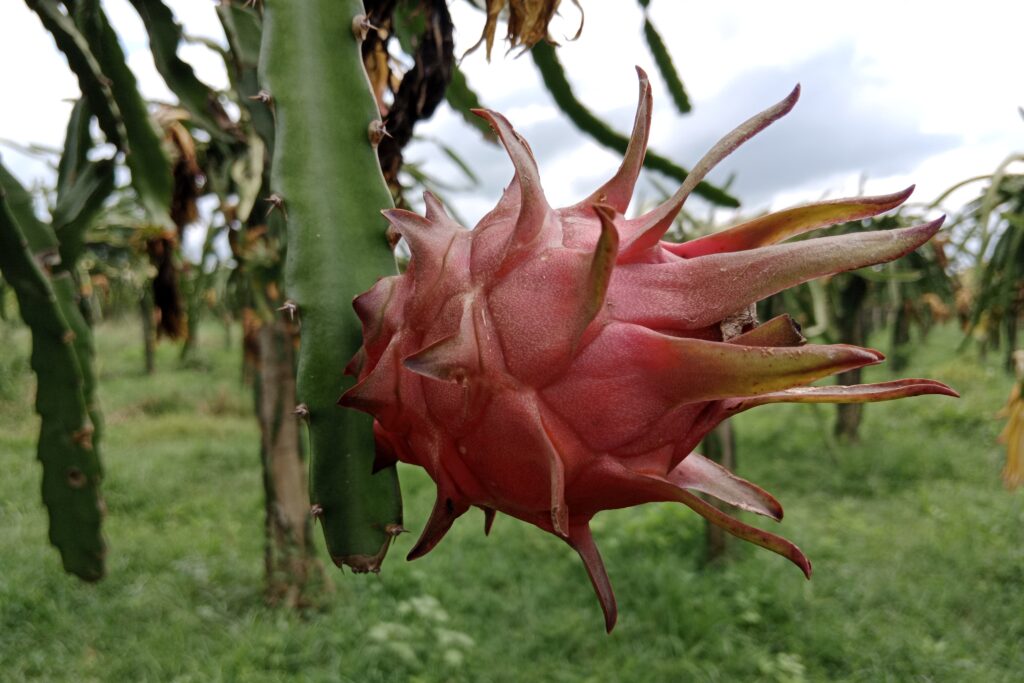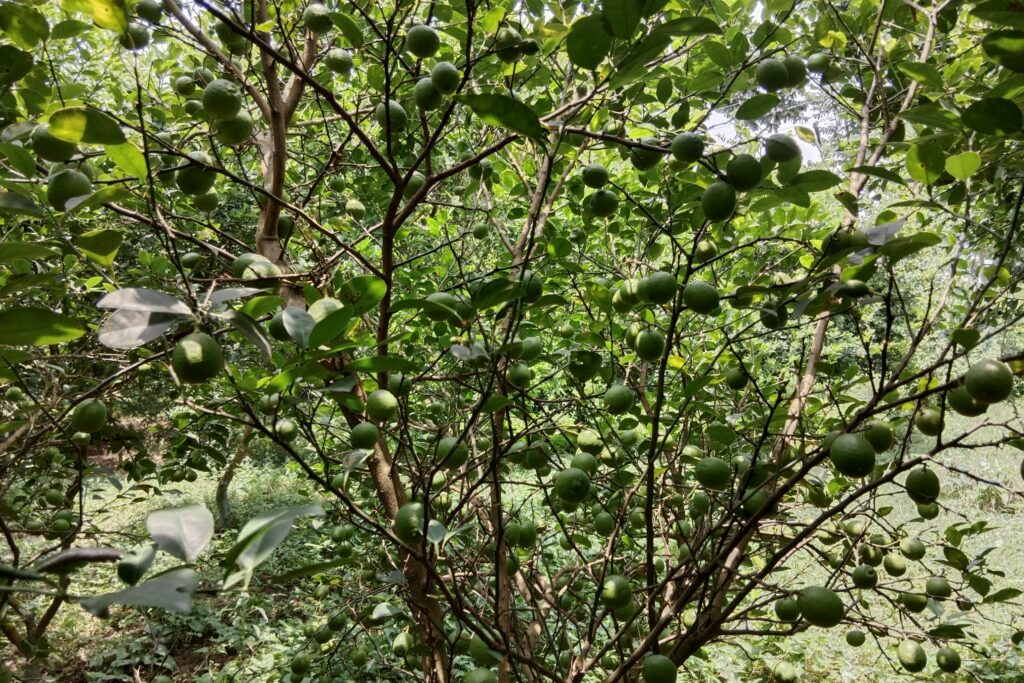Blueberry Farming Guide for Beginners
Blueberries are small, round, nutrient-rich berries celebrated for their vibrant blue color, sweet-tart flavor, and impressive health benefits. Packed with antioxidants like anthocyanins, blueberries have become a global favorite, leading to a surge in blueberry farming worldwide. Whether you’re a commercial farmer or a small-scale grower, cultivating blueberries can be a rewarding venture with the right knowledge and practices. This guide will walk you through everything you need to know about blueberry farming, from land preparation to harvesting and storage.
Land Preparation
Before planting blueberries, thorough land preparation is crucial to ensure optimal growth and productivity. Begin by clearing the land of weeds, rocks, and any debris that could hinder plant development or interfere with cultivation practices. Once the area is clean, focus on enhancing the soil’s structure and fertility by incorporating organic matter such as well-rotted sawdust, compost, or other decomposed materials.
This step is particularly important because blueberries thrive in well-drained, acidic soils rich in organic content. Proper land preparation not only creates a favorable environment for root establishment but also promotes healthy plant growth, leading to higher yields and better-quality fruit. Taking the time to prepare the land meticulously sets the foundation for a successful blueberry farming venture.
Soil Type for Blueberry Farming
Blueberries thrive in acidic, well-drained soils rich in organic matter, ideally ranging from 20% to 50%. The optimal soil pH for blueberry growth is between 4.5 and 5.2, as this range facilitates nutrient absorption and supports healthy development. A soil pH above 6.2 can significantly impede plant growth and fruit yield. In such cases, applying sulfur can effectively lower the pH to the desired level.
Blueberries can thrive on clay soils, but their shallow root system may be harmed by waterlogging, thus adequate drainage is crucial. It is advised to utilize organic mulch, such as pine straw, woodchips, or well-aged sawdust, to preserve soil acidity and moisture retention. In addition to stabilizing soil conditions, this method progressively enriches the soil, inhibits weed growth, and creates an ideal habitat for blueberry plant growth.
Climatic Requirements for Blueberry Farming
As temperate fruits, blueberries require a particular climate to successfully flower and ripen. The necessity of chilling hours—the total number of hours of cold temperatures (usually ranging from 0°C to 7°C) needed during the dormant season to break bud dormancy and encourage healthy growth—is one of the most important considerations. varying blueberry varietals have quite varying chilling requirements:
- Northern Highbush: 800–1100 hours, making them ideal for cooler climates.
- Rabbiteye: 350–800 hours, suited for milder regions.
- Southern Highbush: 200–700 hours, designed for warmer climates.
- Lowbush: Over 1000 hours, known for their cold hardiness.
Frost poses a significant risk to blueberries, as it can damage flowers and buds, potentially reducing yields. Therefore, it is essential to select a variety that aligns with the local climate to minimize frost-related risks. Additionally, blueberries have specific light requirements: they thrive under long daylight hours (around 16 hours) during the vegetative growth phase, which promotes robust plant development, while shorter daylight periods (approximately 8 hours) are necessary for flower bud formation and fruiting. By understanding and meeting these climatic needs, growers can optimize blueberry production and achieve healthy, high-yielding plants.
Major Cultivars for Blueberry Farming
There are several blueberry varieties to choose from, each with unique characteristics:

a). Highbush Blueberry (Vaccinium corymbosum)
The most popular type of blueberry, Highbush Blueberry (Vaccinium corymbosum), is grown because of its versatility and yield. It is a popular choice for both home and commercial gardening because of its large, tasty berries and comparatively high yields, and it thrives in temperate areas.
b). Lowbush Blueberry (V. angustifolium)
The Lowbush Blueberry (V. angustifolium) is a compact, cold-hardy variety native to North America. Known for its exceptionally high antioxidant content and sweet flavor, it produces smaller berries and is often used in processed products like jams and juices.
c). Rabbiteye Blueberry (V. ashei)
The Rabbiteye Blueberry (V. ashei) is a great choice for farmers in warmer climates. Native to the southeastern United States, this cultivar grows well in climates with moderate winters and low chilling needs. Its berries are popular for both fresh eating and processing because of their distinctive flavor and thick skin.
d). Southern Highbush
The Southern Highbush is a hybrid variety developed by crossing highbush blueberries with other southern Vaccinium species. It is specifically bred for regions with mild winters, offering early maturity and a shorter fruit development period. This makes it ideal for areas where traditional highbush varieties might struggle due to insufficient chilling hours.
e). Half-High Blueberry
Half-High Blueberry is a cold-hardy hybrid that combines the best traits of highbush and lowbush varieties. It grows to an intermediate height of 2 to 4 feet, making it suitable for regions with extreme winters and heavy snow loads. Its berries are similar in size and quality to highbush varieties, but its exceptional cold tolerance makes it a reliable choice for growers in harsher climates. Each of these cultivars offers distinct advantages, allowing farmers to select the best variety based on their local climate, soil conditions, and market demands.
Planting of Blueberry
a). Planting Season
The best time to plant blueberries is in the late winter or early spring.
b). Planting Method
- Dig pits that are 18–24 inches wide and 18 inches deep.
- Space plants 1.8 m (6 feet) apart for highbush varieties and 1.2 m (4 feet) apart for lowbush types.
- Ensure proper orchard layout to allow for sunlight penetration and air circulation.
c). Number of Plants per Acre
- Highbush: 1250 plants per acre
- Lowbush: 2800 plants per acre
Intercropping in Blueberry Orchard
Intercropping in blueberry cultivation involves growing compatible crops alongside blueberries to maximize land use, improve soil health, and enhance overall farm productivity. This practice can help suppress weeds, conserve soil moisture, and provide additional income streams. For example, legumes like clover or beans can be intercropped with blueberries to fix nitrogen in the soil, improving fertility, while low-growing herbs like thyme or oregano can act as natural pest repellents.
Additionally, shade-tolerant plants such as ferns or certain flowers can be grown in the understory of taller blueberry varieties, creating a diverse and sustainable ecosystem. However, care must be taken to ensure that intercrops do not compete aggressively for nutrients or water, as blueberries have shallow root systems and specific soil requirements. Properly planned intercropping can lead to healthier blueberry plants and a more resilient farming system.
Irrigation in Blueberry Plants
Blueberries have shallow root systems and require consistent moisture. Drip irrigation is ideal for providing steady water supply without waterlogging the soil. Irrigation requirements may vary depending on climate, soil type, and cultivar.
| Growth Stage | Time Period | Water Requirement per Plant | Frequency |
| Planting to Establishment | First 6–12 months | 4–5 liters per plant | 2 times per week |
| Vegetative Growth | Year 1–3 (Spring to Fall) | 6–8 liters per plant | 2 times per week |
| Flowering and Fruiting | 2nd year onwards (Spring to Summer) | 8–10 liters per plant | 3 times per week |
| Dormancy | Winter (all years) | 2–3 liters per plant | Once every 10–14 days |
| Peak Productivity Phase | Year 4–12 | 10–12 liters per plant | 3 times per week (Spring to Summer) |
| Decline Phase | Year 13 onwards | 6–8 liters per plant | 2 times per week (Spring to Summer) |

Irrigation Method
Drip irrigation is recommended to provide consistent moisture and avoid wetting foliage, which reduces disease risk.
Fertilizer and Manure
Blueberries have specific nutrient requirements and are particularly sensitive to nitrate nitrogen, making ammonium sulfate an ideal fertilizer choice as it provides nitrogen in the ammonium form, which is more suitable for their growth. Fertilizers should be applied in early spring to support new growth and flowering, and again in late summer to aid in fruit development and prepare the plant for the following season.
In addition to chemical fertilizers, incorporating organic matter such as compost or well-rotted manure is highly beneficial, as it enhances soil fertility, improves soil structure, and promotes microbial activity. Organic matter also helps maintain the acidic soil pH (4.5–5.5) that blueberries require for optimal growth.
By combining ammonium sulfate with organic amendments, growers can ensure a balanced nutrient supply, healthy plant development, and improved fruit yield over the long term. Regular monitoring of soil pH and nutrient levels is essential to tailor fertilizer and manure applications to the specific needs of the blueberry plants.
Weed Control
Because blueberries have shallow roots that are susceptible to competition for nutrients, water, and space, weed management is essential in their production. Thick layers of organic mulch, such as sawdust, wood chips, or pine bark, control temperature, keep the soil moist, inhibit weed growth, and preserve acidic conditions.
Because mulch breaks down over time, it must be replenished every year to maintain soil health and weed control. By establishing an ideal growing environment, this technique improves plant vigor and productivity while lowering the need for pesticides. Success depends on regular mulch renewal and routine monitoring.
Pruning of Blueberry Plants
Pruning ensures long-term productivity, maximizes fruit yield, and maintains plant health. Removal of old, weak, or diseased canes improves air circulation, sunlight penetration, and the risk of fungal disease, while also promoting vigorous new growth. It also prepares the plant for efficient mechanical harvesting. Pruning in the late winter to early spring dormant season is an important part of blueberry management because it directs the plant’s energy toward fruitful canes, which results in larger, sweeter berries and a longer lifespan.
Pest and Disease Management

Common Pests of Blueberry
a). Blueberry Maggot
The blueberry maggot is a significant pest in blueberry cultivation, with its larvae feeding on the fruit and causing severe damage. As the larvae tunnel through the berries, they create mushiness and juice leakage, rendering the fruit unmarketable and unfit for consumption. Infestations can lead to substantial crop losses if not managed effectively.
To control blueberry maggots, growers often employ integrated pest management (IPM) strategies, including monitoring with traps, timely insecticide applications, and removing infested or fallen fruit to break the pest’s life cycle. Early detection and proactive measures are essential to minimize damage and protect the quality of the blueberry harvest.
b). Cranberry Fruit Worm
Because its larvae consume the fruit pulp and cause internal damage, the cranberry fruit worm is a destructive pest that seriously threatens blueberry crops. The berries’ regular development is upset by this feeding activity, which causes the fruit to ripen too quickly, shrink, and eventually become unmarketable. If infestations are not controlled, significant yield losses may occur.
Cranberry fruit worms can be effectively managed with integrated pest management (IPM) techniques, which include routine monitoring, timely insecticide administration, and removing affected berries to lower the pest population. Minimizing damage and guaranteeing the production of premium blueberries depend heavily on early detection and response.
Common Diseases of Blueberry
a). Mummy Berry
The fungus Monilinia vaccinii-corymbosi causes mummy berry, which results in mummified berries and large yield losses. Young branches and blooms become infected first, which results in berries that shrivel, stiffen, and fall. The disease cycle is perpetuated by the spores released by these mummified berries.
Removing diseased berries, using fungicides at strategic times, and enhancing air circulation by pruning and spacing are all components of effective management. To preserve yields, early detection and steady control are essential.
b). Stem Blight and Canker
Stem blight and canker, caused by the fungal pathogen Phomopsis vacinii, is a destructive disease that affects blueberry plants, leading to twig blight and cane collapse. The infection typically begins at the tips of young shoots, causing wilting, browning, and dieback of twigs, which can eventually spread to larger canes, resulting in their collapse and death. This disease is particularly problematic in stressed or wounded plants and can significantly reduce plant vigor and yield.
Management strategies include pruning and removing infected canes, improving air circulation through proper spacing, avoiding mechanical injury to plants, and applying fungicides during critical periods. Early detection and proactive measures are crucial to controlling stem blight and canker and maintaining healthy blueberry plants.
Harvesting
Harvesting blueberries is a carefully timed process, as the berries do not ripen simultaneously and require multiple pickings to ensure optimal quality. For fresh markets, hand-picking is the preferred method, as it allows for the selection of fully ripe, undamaged berries, maintaining their appearance and shelf life. In contrast, machine harvesting is commonly used for berries destined for processing, as it is more efficient for large-scale operations.
Machine harvesting typically involves multiple passes over a period of about three weeks to collect berries at their peak ripeness. Regardless of the method, proper timing and handling during harvest are critical to preserving the quality, flavor, and market value of the blueberries. Efficient harvesting practices, whether manual or mechanical, play a vital role in maximizing yield and meeting the demands of both fresh and processed markets.
Yield
Highbush Varieties: 5–10 tons per acre
Lowbush Varieties: 2–4 tons per acre
Sorting
Sorting is a crucial post-harvest step in blueberry production, aimed at ensuring that only high-quality fruit reaches the market. After harvesting, berries are carefully inspected to remove unripe, overripe, or damaged ones, as these can compromise the overall quality and shelf life of the batch. This process not only enhances the visual appeal and consistency of the product but also helps maintain consumer satisfaction and market value. Sorting can be done manually or with the aid of mechanical grading systems, depending on the scale of production. By eliminating substandard berries, growers can deliver a premium product that meets the stringent quality standards required for both fresh and processed markets.
Storage
Because they are extremely perishable, blueberries need to be stored carefully to preserve their quality and increase their shelf life. To reduce moisture loss and delay spoiling, they should ideally be kept at 0°C with a relative humidity of 90–95%. Blueberries can stay fresh for up to two weeks in these circumstances.
However, growers need to be on the lookout for fruit rot brought on by diseases like Alternaria and Botrytis, which can flourish in cold storage if berries are handled incorrectly or are damaged. To protect the berries’ freshness, flavor, and marketability while lowering the risk of fungal infections, proper post-harvest procedures are crucial. These include quick chilling, cautious handling, and maintaining ideal storage conditions.
Conclusion
Growing blueberries is a fulfilling activity that calls for careful consideration of soil, climate, and cultivation techniques. Beginners may successfully cultivate and harvest premium blueberries for their own use or for sale by following this thorough tutorial. Blueberries are a great addition to any farm or garden because of their many uses and health advantages.



Pingback: Apple Farming: A Complete Guide to Beginners. -
Pingback: Cherry Farming: A Comprehensive Guide to Beginners. -